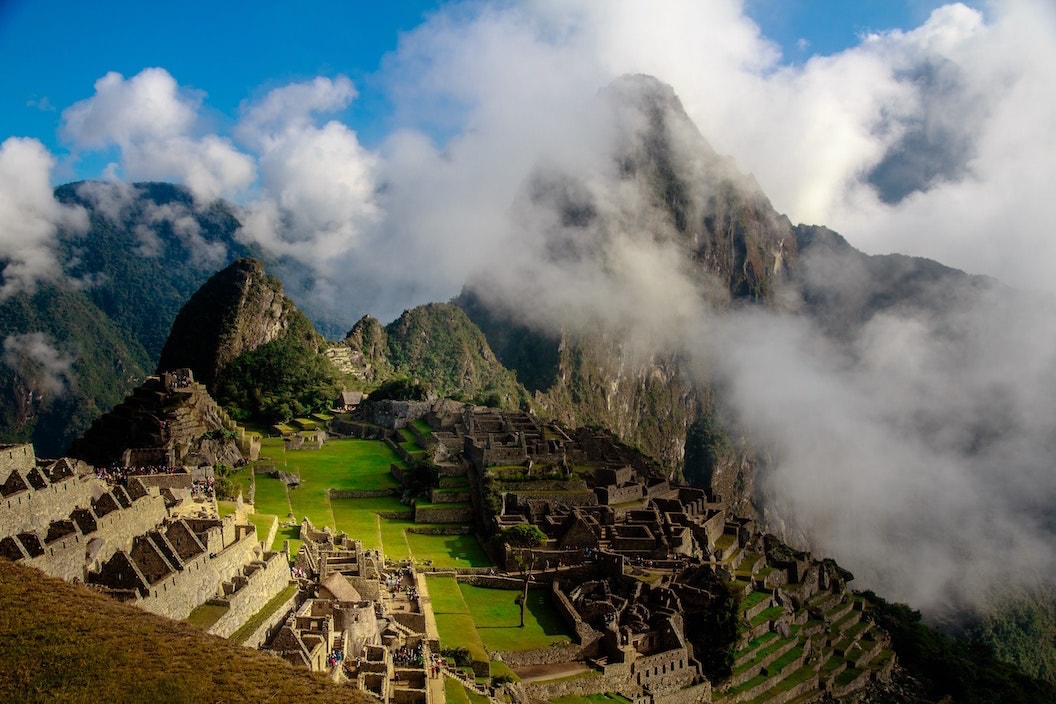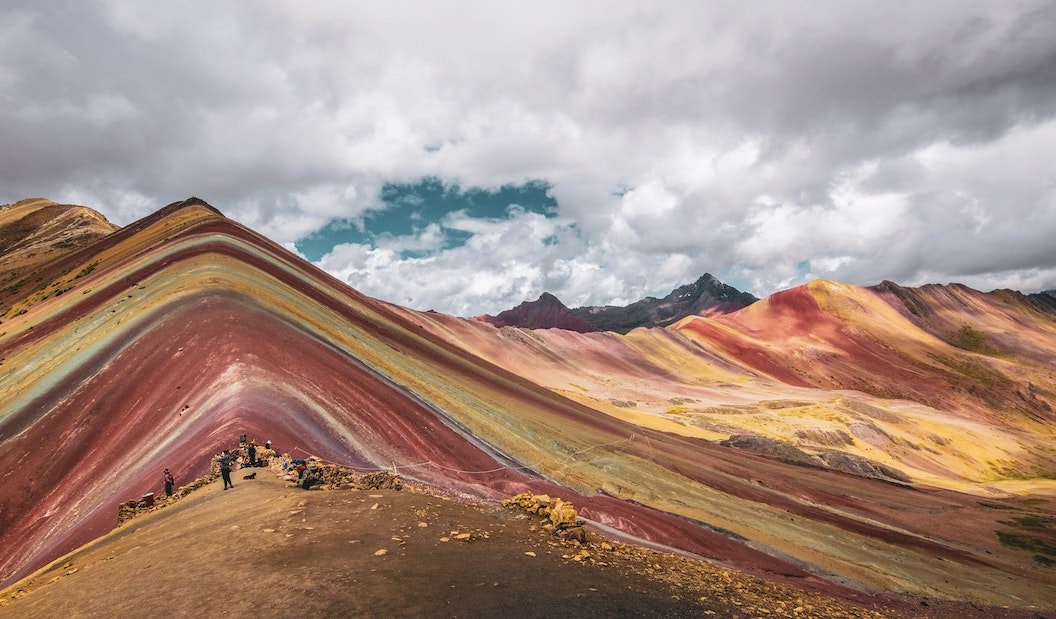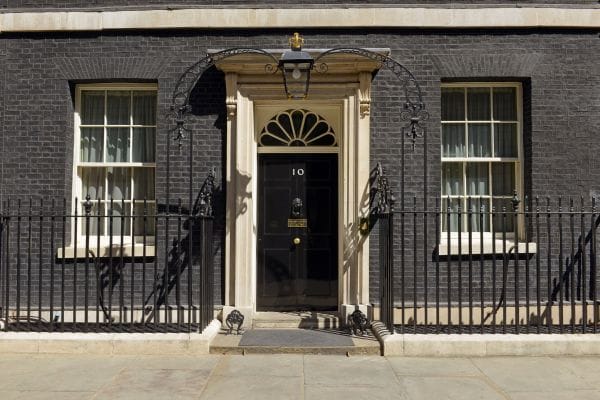I first saw it in a travel magazine when I was something like seven: Machu Picchu, that breathtaking “Lost City” of the Incas.
Emerald green and nestled in craggy peaks unlike any mountain I’d seen before: one awestruck gaze and a dream formed.
“I’ll travel there someday,” I told myself, imagining grassy, timeless earth beneath my feet as I reveled in pyramids of Andean granite against a misty blue sky.

Later, as an adult, I planned a journey: 5,000 miles of air travel, a bus to the base of the Inca Trail, and four days of hiking through small villages and open grasslands before reaching my long-imagined destination. In my minds’ eye I envisioned the moment where those incomparable structures, natural and human-made, revealed themselves to me, sun filtering down on the lush grasses surrounding the pyramids.
As I researched I learned about the newly-revealed Rainbow Mountains, a surreally beautiful site a few days’ trek from Cusco, and added that as a “must do” to the schedule I planned out.
Life intervened and I didn’t take the trip. I saved the itinerary, committing that one day it would happen. After all, Machu Picchu had been on my bucket list before I knew what a bucket list was, and in my mind and heart I ached to visit it someday.
Yet recently, at a time when that long-awaited trip was timely and available, I decided to stay home. I struck it from my list, along with several other places where I had once longed to travel. The decision was deliberate: I couldn’t convince myself that my indulgence in an experience like Machu Picchu was worth the impact my getting there would have on the site – and more importantly, on the planet.
I couldn’t convince myself that an experience like Machu Picchu was worth the impact my getting there would have on the site – and more importantly, on the planet.
More than 1.5 million tourists visited Machu Picchu in 2017, almost double the limit recommended by UNESCO, a nearly 800% increase since the early '80s.
Foot traffic, road construction, deforestation, air contamination, unorganized and unpermitted development, human waste, and refuse left behind: this is a short list of impacts to which Machu Picchu’s 5,000 daily visitors contribute. The average visitor leaves behind some six pounds of garbage, much of it single-use plastic (water bottles, food packaging, etc.) for which limited recycling options exist.
Experts have tracked the waning health of the site’s unique “Andean alpine” flora and fauna for decades. Environmentalists, archeologists, and even the UNESCO caretakers who work to protect the site increasingly declare Machu Picchu's singular ecology at risk.
The average visitor leaves behind some six pounds of garbage.
Climate change and the influx of non-native microbes have enabled new forms of bio-colonizing lichens, fungi, algae, and insects to flourish, accelerating the “exfoliation” of the historical buildings and even the granite peaks surrounding the site.

And now, with work underway to raze the ground for a multibillion-dollar international airport feeding a vision for bringing six million visitors (eight times UNESCO’s recommended traffic) to Machu Picchu and surrounding sites each year, it’s impossible to deny that we’re creating environmental, biological, geographical, and even cultural risk to a site we once thought of as “timeless.”
We’re creating an environmental, biological, geographical, and even cultural risk to a site we once thought of as 'timeless'.
Similar impact, by the way, has already altered those Rainbow Mountains, even in the less-than-a-decade since they were first visited by tourists. Wetlands that were once a resting grounds for a spectrum of migratory birds have now been paved into parking lots. Refuse left by hundreds (some say thousands) of tourists each day increasingly challenges local infrastructure, and foot traffic along the growing number of trails is markedly eroding the colorful – though not as colorful as Photoshop and Instagram would have you think – terrain.
In fact, some speculate that climate change itself caused the once snow-shrouded mountains to reveal themselves to the modern world.
These places aren’t alone. Claims that “global tourist attractions are facing extinction” seem to inspire tourists to grab their photobomb moment while they still can.
Or pose a picture perfect Instagram moment (replete with llama) while the grabbing is good. And to share the brags of lesser-touched sites so that others can follow in their footsteps.
The Bucket List phenomenon, a FOMO epidemic (one possibly challenged by more recent viral ones), and the commercialization of “living your best life” has created what some call a “Thrillseekers and Instagrammers” crisis in US national parks. Click through if time allows. The photos alone tell a concerning story.
Writing this, I feel like a downer. I get it. And I’m asking myself the hard question: what am I going to do instead?
Dumping out my bucket list comes at a cost: I love travel.
I don’t know. Dumping out my bucket list comes at a cost: I love travel, the slow and deliberate kind that opens up understanding of the world and the people who inhabit it. When I have traveled, especially in recent years, it’s been deliberate and carefully planned with a mind toward minimizing my direct impact.
Yet I can’t deny that impact. A long-haul flight (such as one from the US to Peru, or to pretty much anywhere else on my original bucket list) can generate as many carbon emissions as a year's worth of activity for a person in many parts of the world. Ironically, the emissions of my flight to Lima would be more than the annual carbon footprint of someone actually living there.
The emissions of my flight to Lima would be more than the annual carbon footprint of someone actually living there.
And all of the stuff needed to prepare me for that trip, even if acquired as sustainably as possible, involves the sort of cargo ship transport that some say contribute 20% of the world’s greenhouse gas emissions, not to mention all of the energy and raw materials required to produce it.
So what to do?
I’m not ready to say I’m landlocked for all of the years ahead, yet writing that reminds me what a rare privilege it is to even consider heading to a bucket list destination: the mobility that enables even the idea is a relatively new human innovation.
Yet it’s likely a short-lived one. Given the impact that the surge of choices we all face has created, it’s clear that our impact on the environment in the last few centuries outweighs that of the countless millennia preceding that.
Although I’m wary of committing to a flight ban due to my work, I am avoiding any discretionary air flight, and minimizing car travel when I can. When a few recent invitations have required air travel, I’ve lovingly let the inviters know why I will only be with them in spirit.
When recent invitations have required air travel, I’ve let the inviters know why I will only be with them in spirit.
What I will do is think more. About my motivations and the tradeoffs associated with them, and the assumptions that have led me to believe that seeing something and wanting something and actually doing something, acquiring it in some way, are not necessarily a linear progression.
It’s wonderful to think of Machu Picchu being spared one set of footprints yet still held as a treasured thought. It’s actually more satisfying to think of what I have NOT done through my decision to stay home: spared the air, spared the impact, spared, maybe, a small little plant on the side of a footpath whose future flowers may attract a future pollinator and spread future seeds.
It’s actually more satisfying to think of what I have NOT done through my decision to stay home.
That may be an infinitesimal fraction of the demands we’re placing on this fragile and singular planet – the only one we have – yet as countless wise voices have told us, the journey of a thousand miles begins with a single step – or a non-step.
In this case, that is the path I’m choosing.
Ellen Petry Leanse is an author, teacher, and technology pioneer who lives and works in the San Francisco Bay Area. You can follow her on Twitter at www.twitter.com/chep2m




